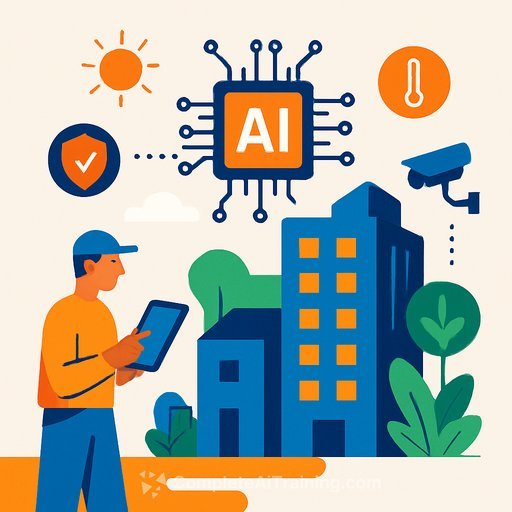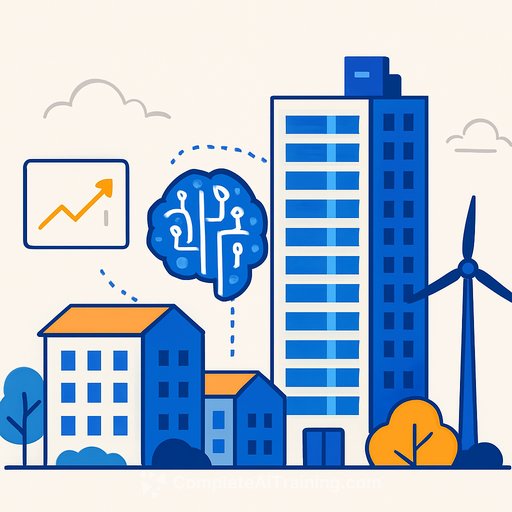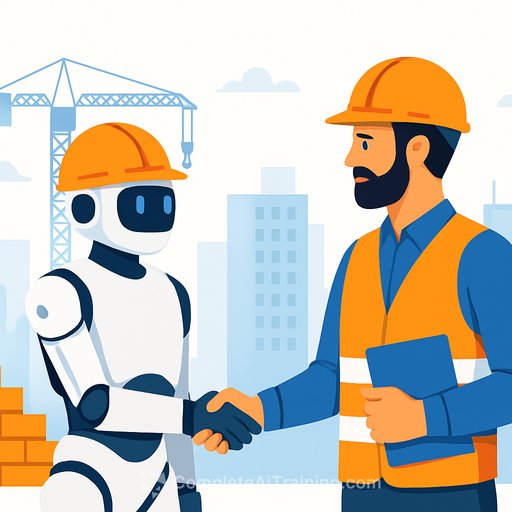AI in Construction: Lower Costs, Faster Schedules, Safer Sites
Across recent industry forums, a clear message emerged: AI is practical, here, and delivering results on major projects. Experts report potential cost reductions of 20-25% and schedule cuts of 40-50% on high-rise work, with fewer delays and tighter control of quality and safety.
The wins come from automation of repetitive tasks, real-time monitoring, and smarter planning. The companies moving first are standardizing data, piloting focused use cases, and scaling what works.
What AI is doing on real projects
- Estimating and bidding: Machine learning uses past jobs to improve takeoffs, cost ranges, and risk scoring. More precise inputs, fewer overruns.
- Schedule optimization: Scenario planning that tests labor, equipment, and sequencing options in minutes, not days.
- Safety and quality: Computer vision flags missing PPE, unsafe behaviors, and site hazards from cameras and drones. Real-time alerts reduce incidents.
- Equipment health: Predictive maintenance on cranes, pumps, and generators cuts breakdowns and idle time.
- Design iteration and coordination: Rapid generation of design alternatives with cost/energy/structural trade-offs. AI-enhanced 3D/BIM checks clashes across MEP and work sequencing to cut rework.
- Sustainability and waste: Material selection support, smarter ordering, and waste tracking reduce scrap and embodied carbon.
How to put this to work in the next 90 days
- Pick two high-ROI use cases: e.g., AI-assisted estimating and site safety monitoring.
- Secure your data: Gather past BOQs, as-built schedules, change orders, incident logs, and equipment service records. Clean and label.
- Choose pilot projects: One complex high-rise and one mid-size project for contrast.
- Set baselines: Current bid accuracy, schedule variance, rework rate, incident frequency, equipment downtime.
- Integrate with existing tools: Connect BIM, CDE, scheduling, and field apps for a single source of truth.
- Train the team: Site engineers, planners, and safety officers get role-specific workflows and checklists.
- Run and review weekly: Track alerts, false positives, cycle times, and impact on decisions. Adjust thresholds and processes.
- Scale: Standardize templates, data schemas, and SOPs before rolling to more projects.
Where the gains show up
- Preconstruction: Faster takeoffs and tighter ranges reduce contingencies and change orders.
- Execution: Early detection of hazards and clashes cuts stoppages and rework.
- Plant and assets: Fewer unexpected failures and more productive shifts.
- Program control: Portfolio-level forecasting spots risk before it becomes delay.
Risk, privacy, and governance
- Data quality: Poor inputs lead to poor decisions. Establish standards for plans, costs, and site logs.
- Worker privacy: Be explicit about camera use, retention, and purpose. Involve safety committees and HR.
- Model oversight: Review false positives/negatives for safety and quality models. Keep a human in the loop for critical actions.
- Policies: Adopt a lightweight AI governance framework and document model choices and changes.
Metrics that matter
- Cost: Bid accuracy (+%), change-order value (-%), cost-to-complete variance (-%).
- Schedule: Planned vs. actual on critical path (days), workface productivity (+%).
- Safety: Recordable incident rate (-%), time-to-hazard resolution (-%).
- Quality: Rework hours (-%), punch-list items per unit (-%).
- Equipment: MTBF (+%), unplanned downtime (-%).
Team skills and next steps
Upskill your estimating, planning, safety, and project controls teams to work with AI-enabled workflows. Focus on data literacy, prompt skills for analysis tools, and change management.
For structured learning paths and role-based programs, explore AI courses by job and the latest programs at Complete AI Training.
Useful references
- NIST AI Risk Management Framework for practical guardrails.
- ISO 19650 (BIM information management) to align models, data, and workflows.
The bottom line: start small, measure hard outcomes, and scale what proves value. Firms that move now will set the cost, schedule, and safety benchmarks others chase.
Your membership also unlocks:






